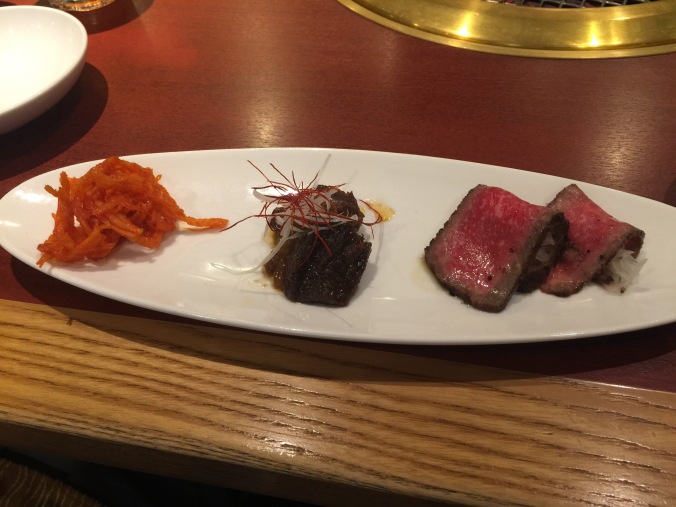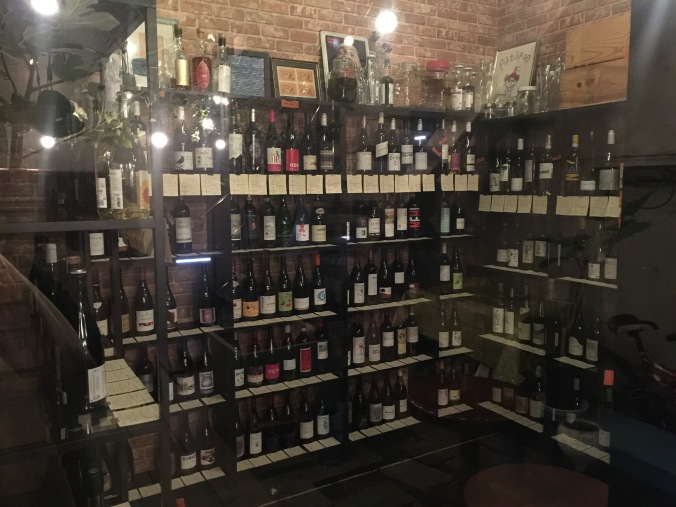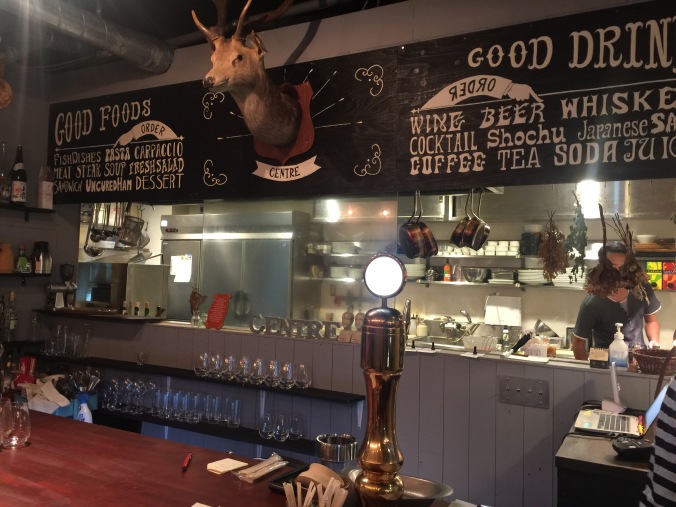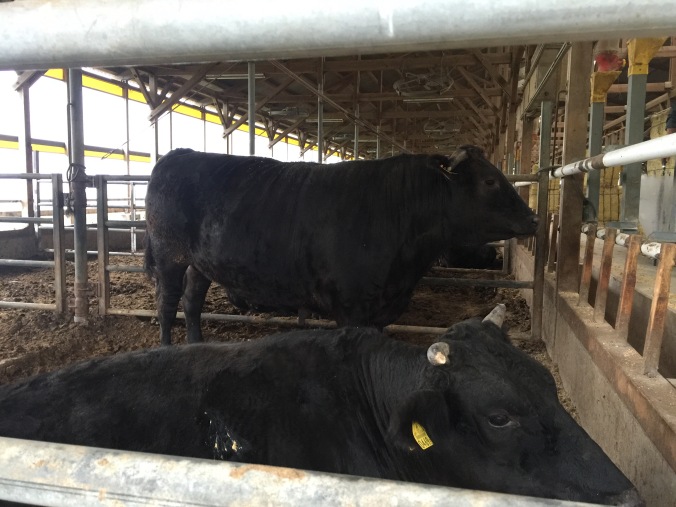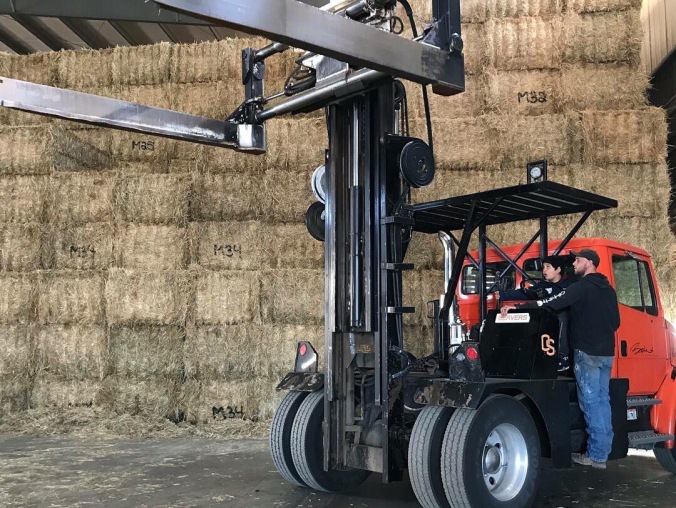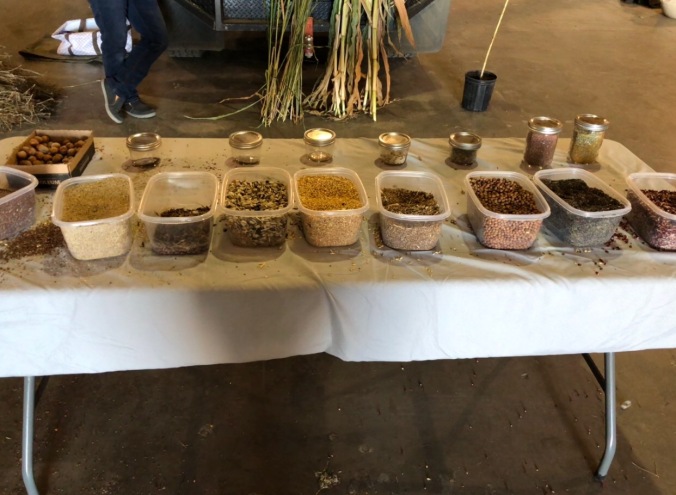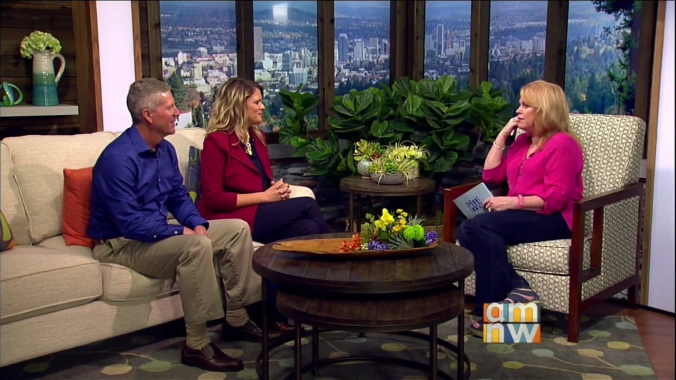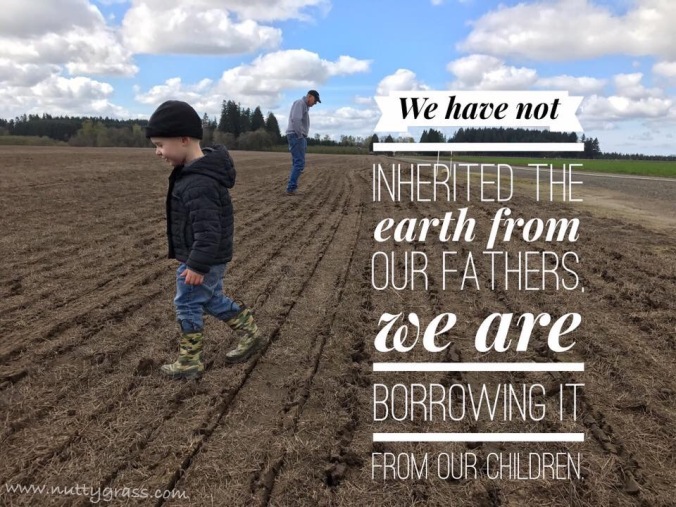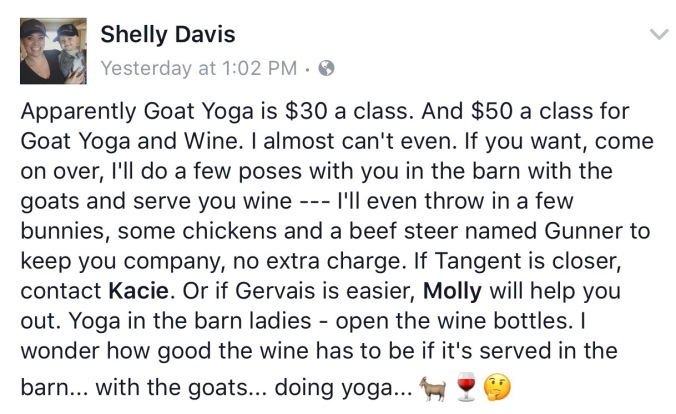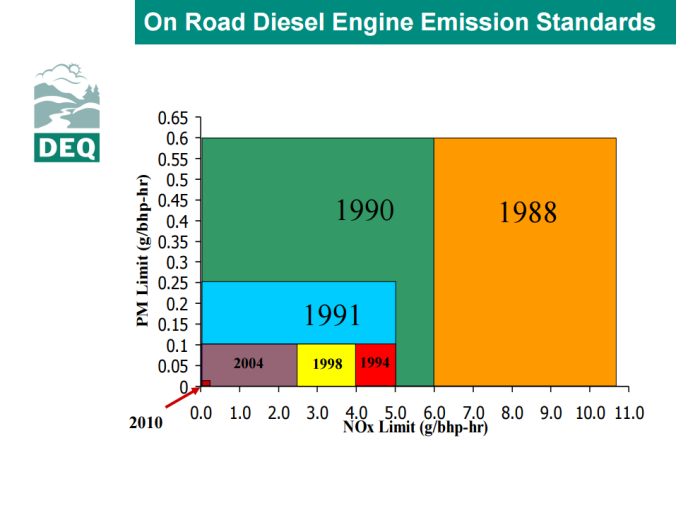Hi, my name’s Shelly, and I’m a daughter of a trucker.
I started this blog with this sentence on Nov 6, 2014 – almost 5 years ago to this day. I haven’t blogged since October 11, 2017… but this article brought me out of blogging retirement:
Some history… on November 7th, 2014, we were on Day 5 of not being able to turn in containers into the Port of Tacoma (full info here from that day). To make a terribly complicated and long story short… we, the truckers that deliver containers to ports, were one step away from the West Coast Ports – including Los Angeles and Long Beach – being completely shut down. (Notable: 65% of America’s imports come through the Ports of LA and LB. The threat to America’s economy is estimated at $2 BILLION each DAY there is a shut down.)
Knowing now that it took until May of 2015 to get resolution, and years for the effects of this crisis to fully resolve with importers and exporters, I find it fascinating to look back and realize that us in the industry knew exactly what was going on almost immediately.
I’ve said this a thousand times, from the AgTC:
“There is nothing that we produce in this country in agriculture, that cannot be sourced somewhere else in the world. We can grow the best in the world, but if we can’t deliver affordably and dependably, the customer will go somewhere else… and may never come back”.
On November 13th, 2014, I was shocked we were still having issues. I was shocked this hadn’t made the news. My naive self actually wrote this this:
“I believe that the newspapers and TV will start covering this by the end of the week if this does not begin to improve. Until then, this is all I’ve got to help – one voice.”
Peter Friedmann, Executive Director of the Agriculture Transportation Coalition met with the White House on November 14th, 2014. Here is his summary of that meeting:
AgTC: White House Meeting Update
November 12, 2014
The AgTC and other industry groups met with White House leadership of the Domestic Policy Council, National Economic Council, and Department of Commerce to discuss the crippling port disruption on the West Coast. We alerted them that agriculture and forest products, America’s largest and most important export, are in serious peril.
There were a lot of aspects that the White House was completely unaware of– they didn’t know how much cargo is being left at the docks or is not able to be moved at all. We were very concerned at how little the White House knew about the situation at the West Coast ports and the impact on the nation’s economy. We made sure that they know now.
The White House said they were monitoring the situation, and we strongly emphasized that monitoring is insufficient. We urged the Administration to take firm action such as bringing in a federal mediator, as was the case in previous instances of labor-management disputes. We told them that we are weighing in with our Congressional delegations and that they will be hearing from Members of Congress.
In the meantime, we will continue to reach out to the press, because we believe the White House will respond immediately to the glare that is cast upon the White House by the press inquiries. We need to stimulate more of those press inquiries, and that is what we will continue to do.
Here’s the deal. It’s not just the White House that didn’t understand transportation. Our Oregon State government didn’t and still doesn’t understand transportation. It’s one of the reasons I ran for the state legislature. I am proud to represent House District 15, and be a voice for the transportation industry. There are a few legislators that “get it” – but honestly the vast majority simply don’t.
On November 19th, 2014, I wrote “Why this affects you” because I needed people to understand WHY they should care.
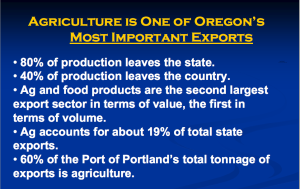
Here is one really good reason why us as Oregonians should care. Agriculture is important to us as Oregonians and as Americans. From the words of our former Governor Kitzhaber: “Agriculture remains one of Oregon’s economic bright spots, creating about 1 in 10 Oregon jobs, with a $5.4 billion production value equal to roughly 15 percent of the state’s economy. There is tremendous diversity in what we grow, with more than 220 different commodities produced under some of the best growing conditions you’ll ever find.”
But if we can’t get it to market, then what good is any of it?
We were on day 13 of a West Coast Port crisis. The hard-working (when they’re working) members of the ILWU at the West Coast Ports were stuck in a negotiation-tactic filled fight with the PMA (Pacific Maritime Association). Until this was resolved and a contract finally filed, we were at the mercy of the Big Dogs. Can you believe that? International commerce was practically at a standstill. Are you okay with that? Our farms were fighting, our company was fighting, our straw-export industry was fighting, the Christmas Tree industry was fighting, the Washington Apple industry was fighting – we were ALL fighting to stay alive, to continue business, to continue our ever-so-important relationships with our overseas buyers. Some of us did not survive the crisis, some of us lost market share, some of us lost customers,… and that is sickening.
“Day 29 of port issues: slow-downs, lack in port production, ILWU walk-offs, truck congestion, and all-over harm to business, agriculture and the economy. The long term repercussions of this are yet to be seen.” I’m still amazed at what we knew at that time.
Interesting quote from that blog on December 11, 2014:
Do not invest another dime into technology, into automation, into innovation. Not until you two INCREDIBLY POWERFUL entities can learn to talk to one another. Here’s some advice: PMA, learn to communicate. ILWU, take some business classes. For the sake of us all.
For more background information on the West Coast Port Crisis from 2014-2015 in my words:
AgTC: Statement of the Agriculture Transportation Coalition
Port Crisis 101: history of, where we stand, and a little of my own opinion…
1-Year Recap of the West Coast Port Crisis – the ship that sailed
Unfortunately: “I told you so.”
Transportation and Oregon – a love/hate relationship – Part 1
Let me explain the problem with this West Coast Port Crisis in simple terms: Let’s say Fred Meyer’s is your favorite grocery store, but for some reason the traffic is horrible specifically in front of that store. One mile down the road, there is a Safeway with no traffic and has easy access. It’s a little harder to get there, but you start going to Safeway because it is efficient to do so. If Fred Meyer’s fixes the traffic problem, do you go back? Maybe. But also maybe do you stay with Safeway because you like the store and you’re now used to it? Possibly. This is what this Wall Street Journal article speaks to. The west coast ports has a traffic problem. The east coast ports do not. China is choosing to spend a little more time and effort to ship into the east coast ports. And they might just find they are easier to work with. Will they make the move? Maybe. Will they ever come back? Maybe. Anyone want to take this risk? I don’t. But it’s not up to me.
OKAY – ENOUGH WITH THE HISTORY – BACK TO CURRENT DAY!
This article prompted me to write tonight:
“A federal jury Monday awarded $93.6 million to the former operator of the Port of Portland’s container terminal, finding the dock workers union sabotaged shipping traffic and caused productivity to plummet through years of labor slowdowns and stoppages.”
YES! We knew this years ago. We knew there was sabotage. We knew this caused productivity to plummet. And we knew our business as we knew it was at risk. There is a long and storied history to Terminal 6 at the Port of Portland. Years of bad management, global trade changing, our inland port, and more.
From the article:
According to testimony, Leal Sundet, one of the leaders of the international union, had threatened the port operator’s chief executive officer Elvis Ganda on May 21, 2012, that “I am the guy who can (expletive) you badly” and that ICTSI “would pay the price” if it didn’t give the refrigerated container work to the longshore workers union. Three days later, Local 8 President Jeff Smith demanded ICTSI assign the dockside refrigerated container jobs to his workers and if not, the union would put ICTSI out of business and run every Hanjin container out of Portland, according to ICTSI’s lawyers.
Do I know everything that went on? No. Was I there? No. Do I have an opinion? Absolutely. I think that the ILWU is made up of incredibly hard working longshoremen – but I absolutely believe the leaders knew they could bully the terminal manager… and they did. Ultimately, ICTSI did not back down. And we all lost. The Port of Portland lost 98% of its container business.
So what happened next?
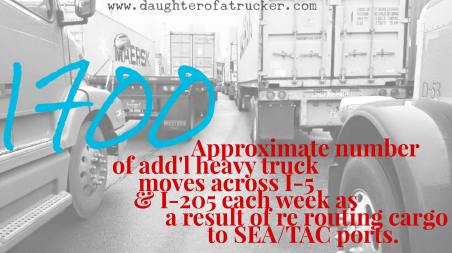
Short answer, there is now increased traffic on the roads. And we are some of those trucks on the road. We utilize Northwest Container Service (NWCS, a remote container yard) located in Portland. NWCS then rails containers north to the ports of Tacoma and Seattle. We can drop off and pick up containers at NWCS, but they cannot handle all of our volume in Oregon, and there are increased risks to only using NWCS (namely less ability to have on-time delivery and equipment availability due to being farther away from the actual ports). In addition, all refrigerated cargo has to be delivered directly to the Ports in Tacoma and Seattle. So, as part of our business strategy to keep our shipments on time and to best service our customers, we deliver to a combination of NWCS, and ports of Tacoma and Seattle. Recently, Terminal 6 added rail service, so we also utilize that rail yard. Diversification is a key strategy in being successful in the strange world of international container shipping.
I would be remiss to not bring the carbon emission debate into this conversation. According to the International Chamber on Shipping: “The shipping industry is a small contributor to the total volume of atmospheric emissions compared to road vehicles and air transport (see graph below) as well as public utilities such as power stations, and atmospheric pollution from ships has reduced in the last decade. There have been significant improvements in engine efficiency and hull design, and the use of ships with larger cargo carrying capacities have led to a reduction in emissions and an increase in fuel efficiency. In terms of CO2 emissions per tonne of cargo transported one mile, shipping is recognized as the most efficient form of commercial transport.”

In summary, due to Port of Portland’s long and torrid history and the West Coast Port Crisis:
- First quarter 2015 GDP slowdown
- Oregon’s export companies lost business, some didn’t survive
- Oregon’s agriculture lost market share and/or took years to climb out of the financial hole the West Coast Port Crisis
- Oregon’s exporters – through trucking companies – now have to drive more to get crops and product to the international markets through Ports farther away
- Oregon and Washington’s carbon footprint has increased since losing the Port of Portland’s container service at Terminal 6
This is a multi-prong, multi-year, multi-government problem we are dealing with. At this time, more people becoming more knowledgeable with both our history and our current state of affairs is exactly where we need to be.
Opportunity for change is on the horizon. Let’s right this ship.




